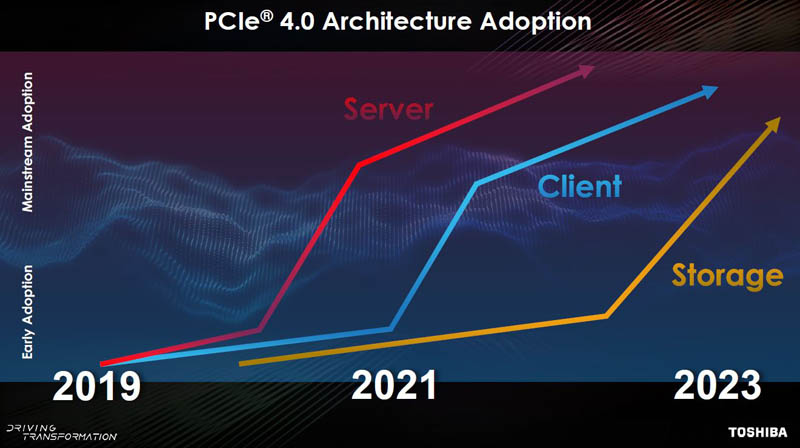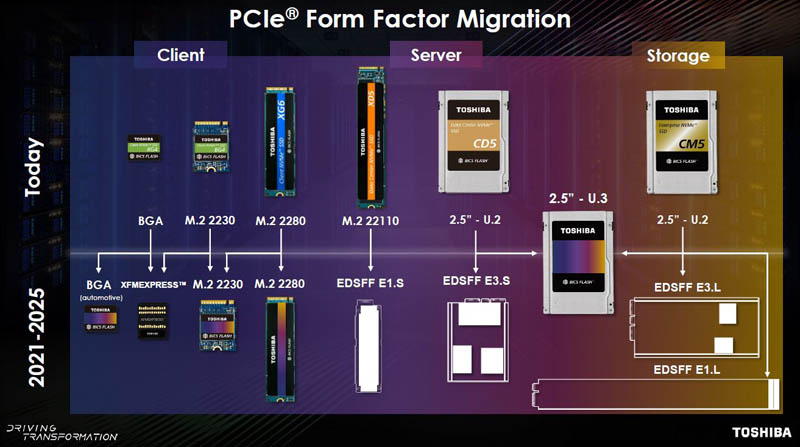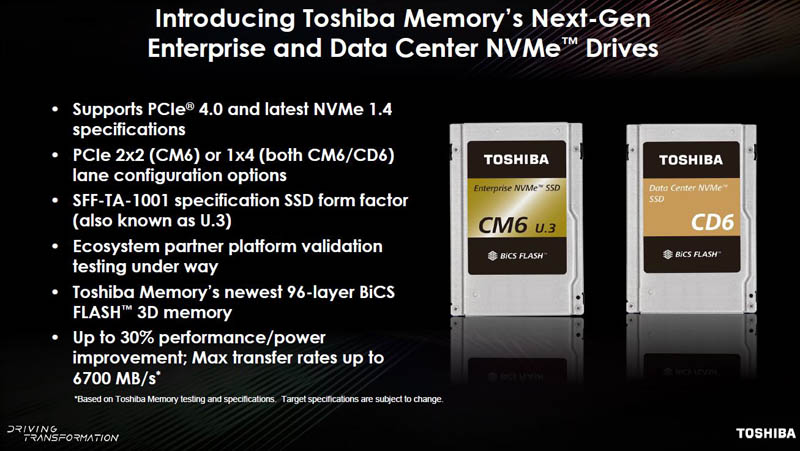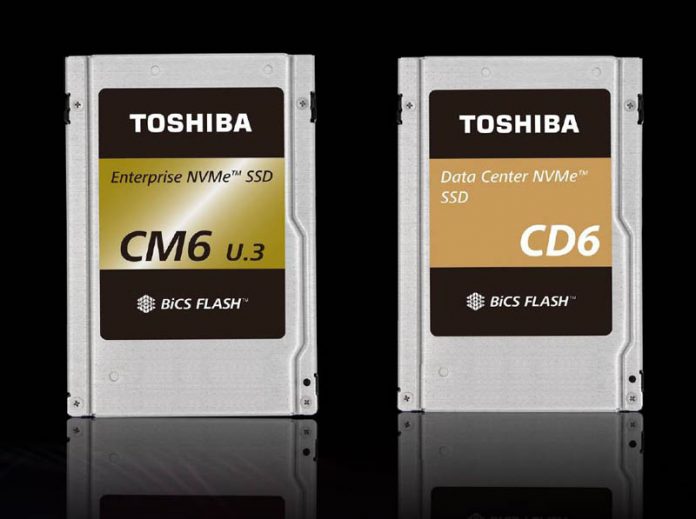Toshiba showed off PCIe Gen4 NVMe SSDs at Flash Memory Summit 2019 and provided STH some insights into how it plans to aggressively pursue the new standard. The Toshiba CM6 and CD6 are the first PCIe Gen4 NVMe SSDs for the server market so if you are looking for the fastest storage, these may be the best options as they go into production.
Market Transition to PCIe Gen4 NVMe SSDs
Toshiba told STH that it expects the AMD EPYC 7002 “Rome” announcement and systems with those processors to kick-off more interest in PCIe Gen4 NVMe SSDs. Although IBM Power9 and the Huawei Kunpeng 920 supported PCIe Gen4 first, having an x86 option with PCIe Gen4 will drive adoption. We discussed this in our AMD EPYC 7002 Series Rome Delivers a Knockout launch piece that went in-depth on the new server CPUs and the market.

The big ram Toshiba sees in PCIe Gen4 SSDs does not happen until 2020. Although Toshiba declined to confirm this, we can say that this is to coincide with Intel Xeon Ice Lake on the server front. Vendors will all have to do complete platform re-designs for Ice Lake’s 8-channel memory and PCIe Gen4 support, so we will see them start to design servers with PCIe Gen4 slots with that generation. With the Intel Xeon transition to PCIe Gen4, we will see most new servers in the market able to utilize the new spec and as a result, NVMe SSD production volumes can increase.

Toshiba expects many of these drives to utilize the U.3 form factor in the future but also many of the EDSFF form factors that are winning the next-generation form factor wars. Expect your first PCIe Gen4 servers may well utilize U.3.
Toshiba CM6 and CD6 PCIe Gen4 NVMe SSDs
The Toshiba CM6 is a dual-port capable PCIe Gen4 NVMe SSD. Using a 2×2 PCIe Gen4 configuration gives the SSD the same effective bandwidth as a 1×4 PCIe Gen4 device to two high-availability hosts. With PCIe Gen4, NVMe bandwidth over SAS3 will be so much higher to two hosts that it will give more users a reason to upgrade.

The Toshiba CM6 also can run in 1×4 mode along with the Toshiba CD6 which cannot run in dual port configuration. Toshiba says the drives will utilize the U.3 form factor and hit up to 6.7GB/s. That immediately provides more bandwidth than PCIe Gen3 devices. It is also where a single PCIe Gen4 NVMe SSD can potentially compete with an entire PCIe Gen3 x8 RAID array in terms of performance.
Final Words
The key takeaways here are that Toshiba (soon Kioxia) is pushing ahead to be early in the PCIe Gen4 storage market for the data center. While there are a number of consumer PCIe Gen4 drives, some vendors may be waiting for the Intel Xeon Ice Lake transition to jump into the market. We are likely to see more of these devices adopt the U.3 form factor which allows for SAS/ SATA/ NVMe drives to be utilized in a common server U.3 bay when they come out.




Really a shame AMD couldn’t line a single vendor up to have PCIe 4.0 server SSDs ready this year. Kind of sad.
@Ryan Metz
Samsung is partnered with AMD and is bringing the Samsung PM1733 to the server market this quarter if I remember correctly.